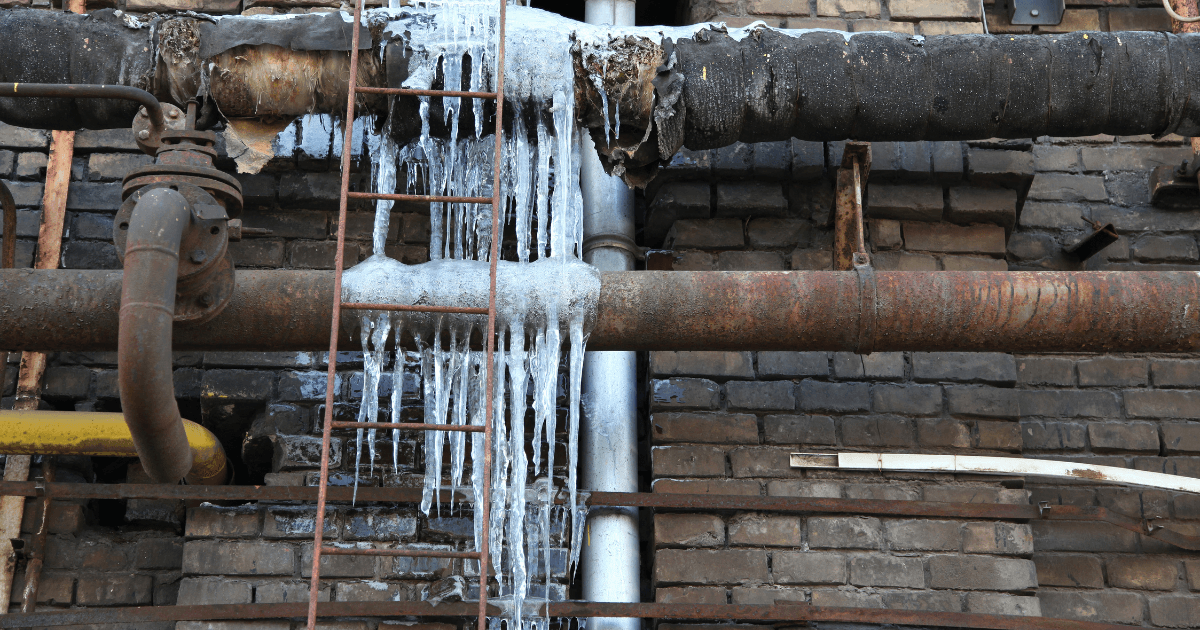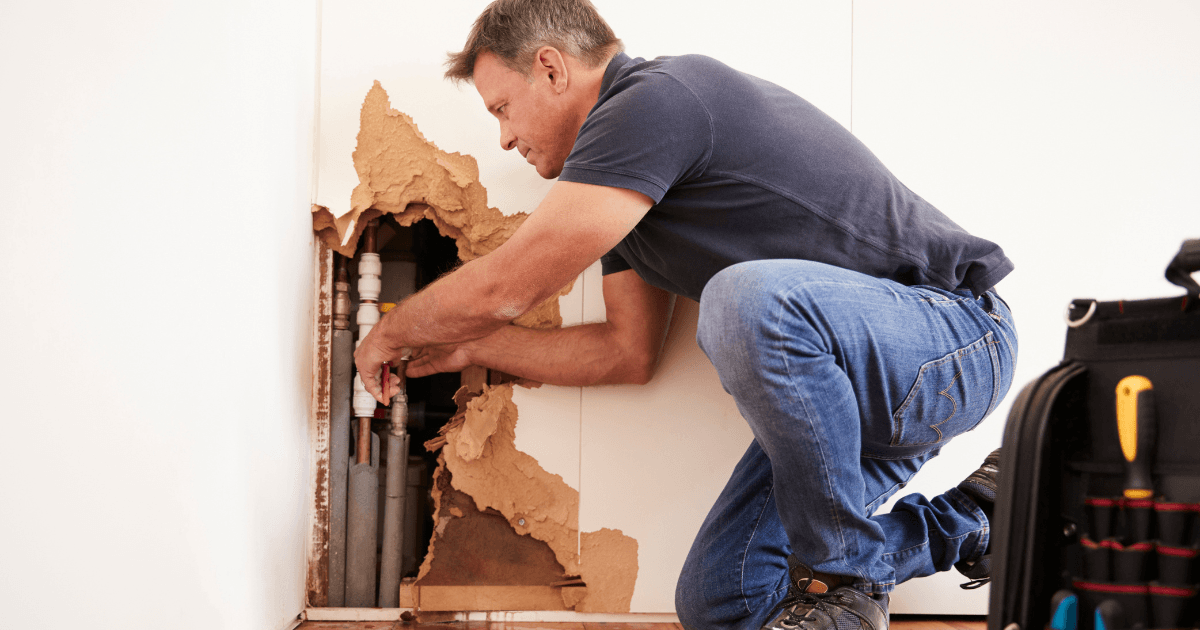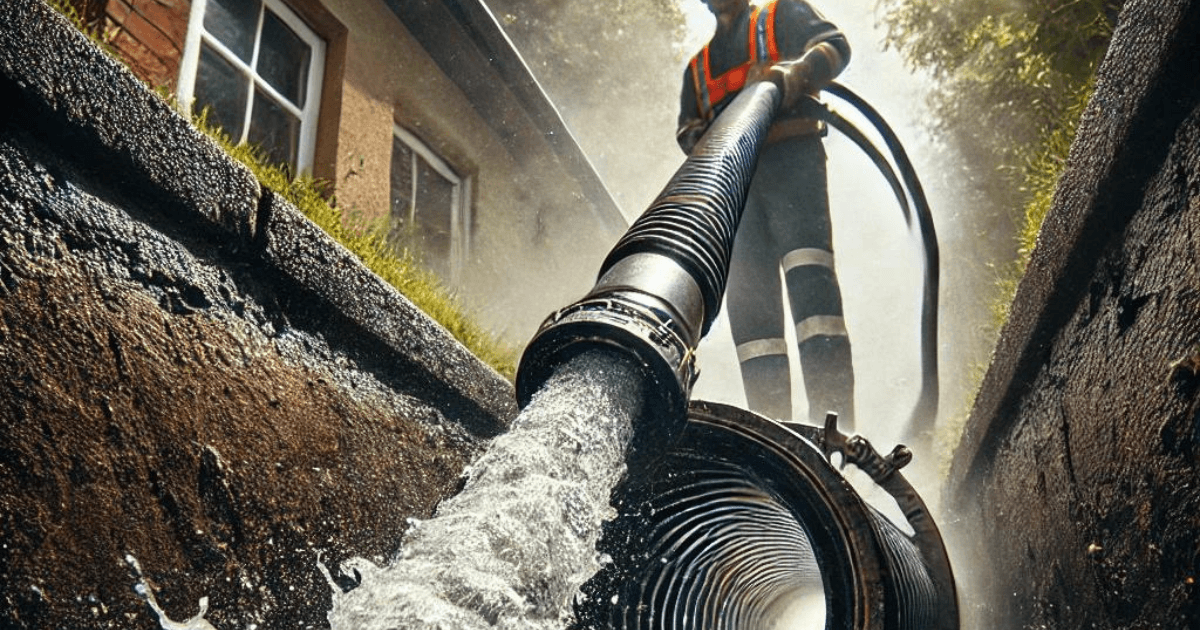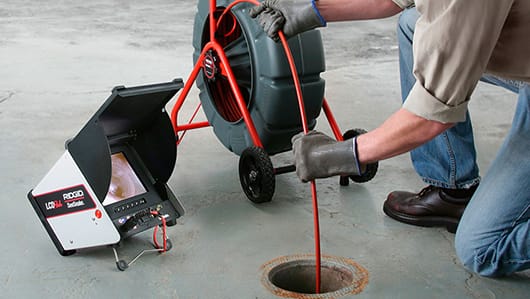Winter presents a unique challenge to homeowners, especially when it comes to maintaining the integrity of their plumbing systems. One of the most frequent and costly issues during colder months is frozen pipes. A frozen pipe may seem like an inconvenience, but when water expands as it turns to ice inside a pipe, it can cause the pipe to burst, leading to significant water damage and repair costs.
While many guides offer tips on insulating pipes or keeping faucets dripping, this article will take a first-principles approach—a method of deconstructing problems to their most basic elements. By understanding the fundamental reasons why pipes freeze, and how homes lose heat, we can develop forward-thinking solutions that not only prevent frozen pipes but also make your home more efficient and resilient during winter months.
Why Do Pipes Freeze? A Deeper Look
To understand why pipes freeze, we need to dive into some basic physics. Water expands as it freezes, increasing pressure inside pipes. However, pipes freeze not just because of low external temperatures but because the thermal energy in the water drops to the point where freezing is inevitable. This is more likely to happen when:
- Insufficient insulation: Pipes running through uninsulated or poorly insulated areas, such as basements, crawl spaces, attics, or exterior walls, are exposed to colder temperatures. Without sufficient insulation, these pipes lose heat to the cold air surrounding them.
- Stagnant water: Water that isn’t moving is more susceptible to freezing. When water flows continuously, even at a trickle, it maintains enough kinetic energy to resist freezing for a longer time.
- Sub-zero temperatures: When outdoor temperatures drop below 32°F (0°C), unprotected pipes are at risk of freezing. As temperatures approach 20°F (-6°C), the risk increases significantly, especially in homes with exterior plumbing.
The Core Misunderstanding: Frozen Pipes Aren’t Just a Cold-Weather Problem
An important but often overlooked fact is that frozen pipes are not just a result of extreme cold. In fact, most instances of pipe freezing occur inside the home, not outside. The key factor is the difference in temperature between interior and exterior environments. Pipes can freeze when homeowners don’t take steps to regulate the temperature inside uninsulated or less frequently used areas of the home.
This leads us to the first fundamental insight: Frozen pipes are more about thermal regulation inside the home than simply exposure to cold weather outside.
Step-by-Step Guide: How to Winterize Your Plumbing
By using first-principles thinking, we can break down the essential tasks needed to keep plumbing from freezing. Winterizing is not about using a band-aid solution for cold days but designing a system that integrates insulation, heat regulation, and intelligent flow to safeguard against freezing temperatures.
1. Insulate All Vulnerable Pipes
Fundamental to keeping pipes from freezing is preventing heat loss. Pipes in unheated areas, such as attics, garages, or basements, should be insulated to maintain a constant temperature inside. The insulation you choose is not just about covering pipes but about slowing down heat transfer between the water inside the pipe and the cold air surrounding it.
- Foam Insulation: Foam pipe insulation, widely available and inexpensive, is easy to install and provides a barrier against rapid heat loss.
- Heat Tape: This is a more advanced solution, particularly useful in areas with extreme cold. Heat tape or heating cables apply gentle heat along the length of the pipe to keep it from freezing.
Novel Insight: Consider the placement of pipes in external walls—if possible, relocating pipes to internal walls may offer a more permanent solution, removing them from cold exposure entirely.
2. Seal Air Leaks Around Pipes
In many homes, the culprit behind frozen pipes is not just the cold temperature outside, but air leaks that allow freezing drafts to come in contact with exposed pipes. Therefore, the key is to control airflow around vulnerable areas.
- Check for Gaps: Focus on areas where pipes enter and exit the house, and inspect walls, floors, and ceilings for cracks or openings. Cold air can seep through even small gaps, rapidly cooling the pipe.
- Use Insulation or Caulk: Seal these gaps with expanding foam or caulk. Pay special attention to where pipes run through basements or crawl spaces, as these are often the most neglected areas.
3. Keep Water Moving
Flowing water is less likely to freeze because it retains kinetic energy and resists thermal loss. This leads to the well-known advice to let faucets drip on extremely cold nights. But why does this work?
When water flows, pressure inside the pipes drops slightly, reducing the likelihood of ice forming and expanding. Moreover, the continuous movement of water carries some heat, preventing it from freezing in one place.
Optimized Approach: Rather than letting every faucet in the house drip, focus on exposed or unheated areas—such as outdoor spigots or pipes in basements—and drip both the hot and cold taps. This balances pressure across the system.
4. Drain Outdoor Plumbing and Irrigation Systems
Outdoor plumbing fixtures like garden hoses, sprinkler systems, and hose bibs are among the most vulnerable. A small amount of residual water in these lines can freeze, expand, and cause cracks in the plumbing.
- Disconnect and Drain: Start by disconnecting garden hoses from outdoor spigots, and drain any water left in hoses.
- Frost-Free Spigots: For outdoor faucets, install frost-free hose bibs. These are designed with valves placed deeper within the wall, where temperatures are warmer, preventing the pipe from freezing.
5. Use Smart Technology to Prevent Frozen Pipes
Emerging technology allows homeowners to monitor their plumbing systems remotely, ensuring they take proactive action before pipes freeze. This integrates the principles of anticipation and early warning systems into modern plumbing management.
- Smart Thermostats: These devices allow homeowners to monitor and control the temperature inside their home, ensuring that cold-prone areas maintain sufficient warmth. In particularly vulnerable areas, like basements or garages, thermostats can trigger auxiliary heaters or pipe heating cables.
- Smart Water Sensors: These can detect water leaks or freezing conditions and send alerts to your phone, allowing you to act quickly before the situation worsens.
Future Thinking: As smart home technology evolves, we may soon see AI-driven plumbing systems that automatically adjust water flow and temperature based on real-time weather conditions, preventing freezing through intelligent automation.
What To Do If Your Pipes Freeze
Even with preventive measures, pipes can still freeze in extreme conditions. Knowing how to respond is critical.
1. Thawing Frozen Pipes
When dealing with a frozen pipe, time is of the essence. The longer a pipe stays frozen, the more pressure builds up inside, increasing the likelihood of a burst.
- Identify the Frozen Area: Look for frost on the pipe or use a temperature sensor. The most common places for freezing are uninsulated areas like basements and crawl spaces.
- Apply Heat: Once identified, begin warming the pipe by applying a heat source, such as a hairdryer or space heater. Never use an open flame, as this could damage the pipe and increase the risk of fire.
- Keep the Faucet Open: As the ice melts, water will begin to flow. Keeping the faucet open helps relieve pressure inside the pipe.
2. When to Call a Professional
While DIY thawing techniques work in many situations, some cases require professional intervention. If you notice cracks or breaks in the pipe, or if you are unsure about how to thaw the pipe safely, it’s essential to contact a plumber immediately. Professionals have the expertise and tools, such as thermal imaging cameras and industrial-grade heaters, to handle frozen pipes without causing further damage.
Conclusion: Winterizing for the Long Term
Winterizing your plumbing is more than just a yearly task—it’s about creating a system that integrates resilience into your home’s infrastructure. By understanding the fundamental principles behind heat loss, water flow, and the vulnerabilities of your plumbing, you can take meaningful steps to prevent frozen pipes and ensure your home remains safe during winter months.
Actionable Takeaways:
- Insulate exposed pipes and seal any gaps in your home.
- Keep water moving in vulnerable areas to prevent freezing.
- Utilize smart technology to stay ahead of potential freezes.
By applying these first-principles insights, you can ensure your home’s plumbing system is prepared to face even the harshest winter conditions, protecting both your home and your wallet from the risks of frozen pipes.
FAQ Section
- At what temperature do pipes freeze?
Pipes can start to freeze at around 32°F (0°C), but unprotected pipes are most at risk when temperatures drop below 20°F (-6°C). - What are the best materials for pipe insulation?
Foam pipe insulation and fiberglass wrap are excellent choices for insulating pipes in colder areas of the home. - How can I tell if my pipes are already frozen?
Common signs of frozen pipes include reduced water flow, frost on the outside of the pipes, or unusual noises when you turn on the faucet.





